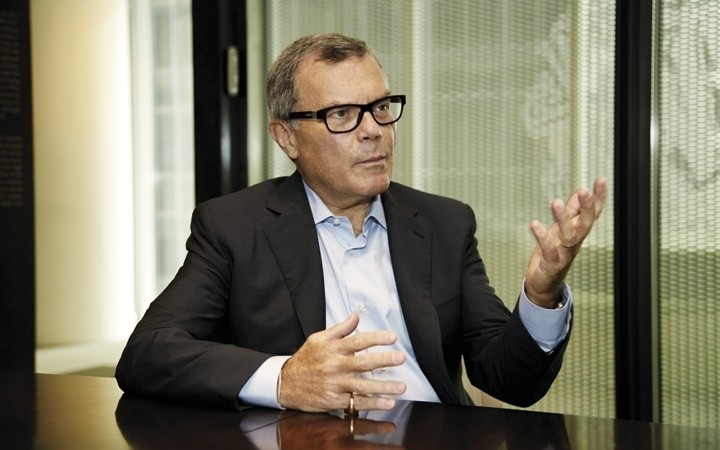
As the world it inhabits becomes more complex, WPP, the world’s largest marketing communications group, has continued to evolve: competing in more sectors to deliver more services to more people than ever before.
“I hate to use the word suppliers,” says the company’s founder and CEO, Martin Sorrell. “I prefer junior partners. But whether you call us junior partners or suppliers, we are actually very important in the process.”
Media fragmentation and marketing clutter are diminishing the impact of traditional advertising, while budgets are coming under the sway of new constituencies in an information-rich world – increasingly the CIO and CTO, as well as CMO and CFO.
New industry ties are forming too. WPP spent US$2 billion with Google in 2012, 25% more than the year before, approaching its $2.5 billion relationship with News Corp, WPP’s biggest media partner as of last year, on a notably faster growth rate.
In response to these trends, Sorrell has been broadening what WPP does, and redefining the way the group works.
“The whole business is changing,” he says, speaking to Media Business Asia.
“It’s a failure to understand that, particularly for legacy companies, that causes the problems.”
The latest phase of WPP’s metamorphosis began five years ago, with the US$649 million purchase of ad technology firm 24/7 Real Media.
It was the first (and only, the WPP boss contends) major ad technology acquisition by a marcoms group, in response to swoops in the same space by Google, on DoubleClick for US$3.1 billion, and Microsoft, landing the Atlas platform as part of its US$6 billion move on aQuantive.
24/7, now part of WPP Digital, continues to act as a strategic hedge against large digital intermediaries becoming too powerful, forming the basis for Xaxis, a new unit that specializes in buying digital audiences.
“Effectively we have got two channels for our clients,” Sorrell says.
“One through our Xaxis platform, an independent opt-in platform, and one in partnership with Google and Facebook and Twitter and everybody else.”
The strategy opens up new lines of co-opetition – the pursuit of simultaneous competition and co-operation that underpins many business models in Silicon Valley, and is becoming more common in adland too.
In April last year for example, WPP teamed up with one frenemy, IT giant Infosys, to knit together marketing services with marketing software to make an easier-to-use digital marketing platform.
WPP continues to push its technology credentials, buying stakes this year in Globant, a Latin American digital marketing firm with 2,700 software engineers on the payroll, as well as two e-commerce specialists in Europe, eCommera and Salmon.
WPP must do more to marry art and science, Sorrell explains, with acquisition the preferred route. “We have got to have more direct access,” he says.
WPP Digital, meanwhile, doubles up as a quasi private equity unit, helping keep the group and its agencies up to speed on the interplay between technology and marketing.
Buying into the likes of Globant for example also signals more head-to-head competition with IT firms such as Sapient and Cognizant, as well as technology-based consultancies such as Accenture, Deloitte and IBM.
“It’s much more complex than people think,” Sorrell says.
“A lot more of what we’re trying to do or doing is aimed at the CIOs and CTOs, and that’s because historically CMOs developed websites, or what I would call front-end operations, not worrying too much about what the platforms were.
“The CIOs and CTOs have become more and more important, particularly as clients rationalize their platforms.”
Sorrell sees WPP’s technology plays, combined with the group’s presence in fast-growth markets, as key advantages over traditional rivals such as Omnicom, Publicis and IPG. Strategically, the two areas are quite different however.
While not always easy to execute, decisions over geography are relatively straightforward. The technology piece, however, poses more of a challenge.
“It’s very difficult to figure out what’s next,” Sorrell says. “The honest answer is I don’t know, but I’ll know it when I see it.
"We may not be the first mover but there are some advantages in being second or third, because it also rapidly shifts.
"We’ve always got to be in the position where we evaluate all the alternatives. I don’t care about the share each individual medium has as long as the cake is stable or grows.
"As long as we have access, as long as it’s open source, it’s not a problem.”

As a leading independent consulting and research provider focused on Asia media & telecoms, MPA offers a range of customized services to help drive business development, strategy & planning, M&A, new products & services and research. Based in Hong Kong, Singapore and India, MPA teams offer in-depth research reports across key industry sectors, customized consulting services, industry events to spread knowledge and unlock partnerships, and publications that provide insights into media & telecoms.
All Media Partners Asia articles >Thank you for submission
Once you activate the account, your subscription entitles to receive 3 months of complimentary access to ‘The Digest’, MPA’s monthly email analysis,updates across TMT with exclusive industry interviews and data.